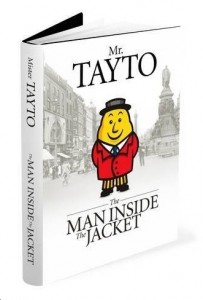Edinburgh Central Library hosted the second of its Edinburgh City Reads events just before Christmas, with a reading by Iain Banks from his new novel Transition, followed by an interview from Alan Taylor and a question and answer session.
There was a very relaxed atmosphere in the Reading Room of the library when we arrived, despite choosing seats right next to a camera, where my embarrassing laugh was a risk of national exposure. Perhaps the wine helped. After reading the prologue from his new book, questions from Alan Taylor and a member of the audience encouraged Iain to speak about marketing books in the science-fiction genre as well as the fiction. Iain Banks has written 24 books, split pretty much evenly between the two, but uses the name Iain M. Banks for his sci-fi books and Iain Banks for fiction. Initially, his publisher discouraged him from using ‘M. Banks’, saying it was “too fussy” and because of its association with Rosie M. Banks (Wodehouse character). In time he settled into using it as his science fiction pen name, considering it American-sounding and also simply a better name to promote science fiction under.
Despite having achieved acclaim in both genres, the number of fans crossing over between his styles (particularly towards science fiction) may be slim. Iain joked about the snobbery involved in picking up a book and being repelled on discovery that it contains parallel universes or quantum physics. It would be interesting to know how sales of his books would have fared had they all been published either with or without the M (which stands for Menzies, by the way, and there are a couple of funny stories to go with it). This point is of practical concern to Little, Brown and Company, as it is the first of Iain Bank’s novels in which the requirement of an ‘M.’ is debatable. ‘Transition’ contains the multiverse theory that each event that occurs involves a different event occurring in another possible world. Several characters in the novel can travel between these infinite variations.
It sounds incredibly complicated, but reviews suggest that Banks’ latest book will be a success with fans. I wonder how well exposed it will be to his science fiction fans, who may choose not to bother after noticing the absent ‘M.’
Later there was time for a few questions from the audience. Having dared my girlfriend to ask “Where do you get your ideas from?” which we considered to be the most embarrassing question possible, we were both spared the effort when a woman in the front row spoke about multiverse theory for a couple of awkward gap-filled minutes before finishing with the noticeable absence of a question mark. The microphone was taken from her and given to a man who asked to what extent Iain was aided by drugs in his writing. I knew he was a keen whisky drinker (and he now does no other drugs, excluding the espresso machine), but the answer that followed was so open and frank that at first I wondered if he knew the camera was there, and then just found him more likeable.
I went to the event having only read Iain Banks’ first novel, The Wasp Factory, but will gladly go to see him at other readings and am now looking out both for books by Iain Banks, and by Iain M. Banks.
— Alistair Coats
 This week, Oxford University Press published the Oxford Companion to the Book, a two-volume reference work covering all aspects of book culture, including publishing, printing, reading and authorship, from ancient times to the present day.
This week, Oxford University Press published the Oxford Companion to the Book, a two-volume reference work covering all aspects of book culture, including publishing, printing, reading and authorship, from ancient times to the present day.

